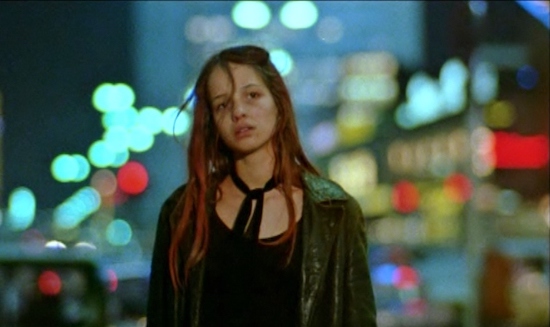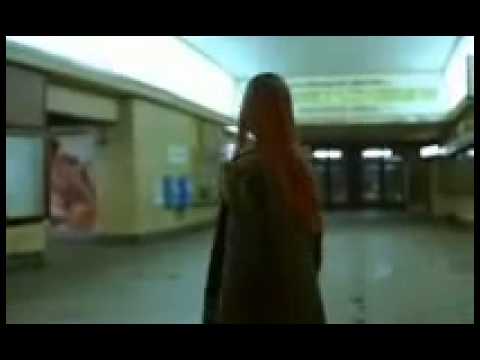Few places have been mythologised in the contemporary cultural imagination more than late 1970s / early 1980s Berlin. With German society in a state of flux, and post-war economic deprivation leading to cheap rents and vast swathes of abandoned industrial space, the western part of the capital proved an ideal breeding ground for all kinds of exciting counter-cultural developments. Before the Wall fell in 1989 ahead of the eventual reunification of the country, the city served as an artistic refuge for the likes of David Bowie, Lou Reed, and Nick Cave, as well as producing such iconic homegrown talents as Einsturzende Neubauten and Tangerine Dream.
Growing up in this creatively fertile enclave, young Christiane Felscherinow experienced both the highs and lows of its hedonistic social life. At the tender age of 13, she started going to the trendy SOUND nightclub, where she would dabble in speed and LSD. Her circle of friends soon moved on from this to regular heroin use, and it wasn’t long before they fell into homelessness and prostitution, with a tragically early death awaiting many of them. In 1979, when Christiane was still only 16, her recollections of this period of her life were published in a best-selling book, Zoo Station: The Story of Christiane F., which was subsequently adapted into one of the most memorable cult films of the era. Christiane F turns 40 this year, and remains a powerful portrait of heroin addiction, as well as a fascinating time capsule from Berlin’s past.
In an interview with Vice, Christiane was asked what she thought drew people into her story. “I simply don’t know,” she replied. “I’m nothing special. I haven’t done anything special. I’m not even a special junkie—thousands of people have a similar story to mine.” She doesn’t seem to notice, here, that she might have already found the answer. A huge part of the appeal of her story is that it is so ordinary, and that she could just be anyone. The public image of heroin users at the time of Christiane F.’s release, and perhaps even today, is of someone who exists outside of mainstream society: a poet or jazz musician in the early part of the 20th century, a rockstar in the 1960s, or just someone who’s been excluded as a result of their socio-economic background. While Christiane and her friends were enthralled by the non-conformist lifestyles that were so prevalent in their hometown, their own lives were peripheral to this bohemia. And though their family situations weren’t always comfortable, they were far from the kind of poverty usually associated with a slide into drug dependency. They were just bored kids who started using heroin because it seemed like a cool thing to do. And it was, until it wasn’t anymore.
It would be easy to see a kind of lurid exploitation in Christiane F., with youthful bodies shooting up from dirty needles, vomiting and overdosing on public toilet floors, and being sold for sex to much older men. But the film’s matter-of-fact approach is perhaps even more bracing than what it depicts. Moviegoers are now relatively familiar with the indignities and abjection of heroin use, as the likes of Trainspotting and Requiem For A Dream used all manner of stylistic flourishes, from kinetic editing to hallucinations of dead babies, in an effort to approximate what the characters were going through. But when Christiane and her boyfriend Detlef decide to kick their habit for the first time, and we see them shivering uncontrollably through their withdrawal and tearing at bedroom wallpaper in a cold sweat, there’s a rawness to these scenes that’s difficult to find anywhere else. Foregoing showmanship that could end up creating an aesthetic distance, Christiane F. looks the suffering of its young addicts right in the eye. Though it might not have a whole lot to say about what it sees there, the verite style withholds judgment and refuses to romanticise or sensationalise.
This quasi-documentary realism followed naturally from Christiane F.’s journalistic origins. Hard drug use was on the rise amongst teenagers throughout Germany in the 1970s, and reporters Kai Hermann and Horst Rieck had interviewed Christiane for the left-leaning current affairs magazine Stern in an effort to raise awareness. They first encountered her when she was testifying in court, giving evidence against a man accused of soliciting sex from two underage heroin addicts. Following the film’s release, Christiane ended up being revered by many as a style icon, and it’s debatable whether the work of Hermann and Rieck really deterred kids who were tempted by her lifestyle. But they did succeed in getting people’s attention, and contributed towards the faithful preservation of an era.
When the book that collected the Stern interviews was being adapted for the screen by up-and-coming director Uli Edel, its reputation was already so well-established that Bowie, no stranger to heroin himself, was willing to join the production. He performs in a memorable concert scene, and plays a key part in Christiane F.’s specific sense of time and place. Much of the film’s visual appeal lies in its efficient use of Berlin locations, including SOUND, popular prostitution spot Zoo Station, and a number of desolate industrial spaces. More than a backdrop for a story, the city has a real presence in the film, and to watch in the present day is to be haunted by people and places that have since passed on.
Although Bowie, “West” Germany, and many of Christiane’s friends have now ceased to exist, the story that ties them together has been resurrected recently. Last year saw the debut on Prime Video of Wir Kinder Vom Bahnhof Zoo (We Kids from Zoo Station), a new Berlin-set series covering many of the same figures and events. More impressionistic than Christiane F., the show blends period music with more up-to-date needle drops, and has a sleek, meticulous production design that strays from the older film’s grimy glamour. The focus has also shifted slightly, with the experiences of Christiane now being used as a jumping-off point for a broader, more universal story.
Unfortunately, this reimagining of Christiane F. lacks much of the context and character that made the original so special. Where we once saw real figures and settings that evoked a particular moment, the idea of that moment is all that remains in Wir Kinder Vom Bahnhof Zoo. This is a dynamic already familiar from more mainstream media: a show like Stranger Things mostly conjures nostalgia for the way that the 1980s were portrayed in its films and TV shows, as opposed to tapping into actual memories of living through that era. It’s hard not to feel like something is being lost to this process, as our cultural memories are constantly strip-mined for reboot and remake potential.
Although a more challenging and obscure work, perhaps it shouldn’t be surprising that Christiane F. can be treated as a property just like anything else. After all, it was made in Berlin, a place that has become synonymous with gentrification over the past few decades. To the increasing dismay of long-term residents, tourists and hipsters of all stripes are now looking to buy into the trendy urban playground that the city’s counter-cultural scene eventually evolved into. It’s the consumption of an idealised image or story of a place, without participation in any of the creativity, labour, or suffering that went into making it what it is. Just as a vibrant social history has become something commodified and repackaged for purchase, Wir Kinder Vom Bahnhof Zoo is prestige streaming TV riding on the coattails of Christiane F.’s authentic rendering of Berlin life.
When the period depicted in the film was over, Felscherinow’s life didn’t stop being eventful. In fact, this was only the start of her wild ride: she went on to befriend famous literary figures including Patricia Highsmith and Patrick Süskind, dated Einsturzende Neubauten’s Alexander Hacke, started her own music career, and flitted from Germany to Zurich and Amsterdam after being deported from the United States. But before all that, she got to meet her hero David Bowie, when she was invited to travel with him to the premiere of Christiane F. in 1981. As she tells it, she was incredibly excited to meet him, and used a lot of cocaine to cope with her nerves. But then she hopped into his limo, and was disappointed to see how small and unimpressive this extraordinary cultural icon appeared in the backseat.
Christiane is clearly more aware of the gulf between myth and reality than the creators of Wir Kinder Vom Bahnhof Zoo are. And she’d probably be perceptive enough to notice striking similarities between the habits she never managed to kick and our own cultural addiction to nostalgia. As thrilling as it might be to look back through the lens of something like Christiane F., it often feels as though we’re stuck chasing an initial high that we weren’t even around to experience – or something that might have never even existed in the way that we imagine.




